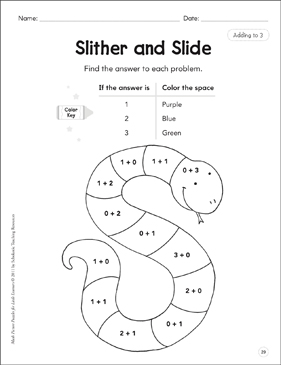
Iowa grants grant money to non-profit organizations and government agencies. They can improve the quality of your life. The local governing board reviews each application. The grants aim to improve the quality and life of Iowans. However, not all organizations are eligible for grants. Contact your local government to determine if your organization qualifies for grants.
Agricultura concepts can be used to teach reading, writing and math as well nutrition, science, science, and social studies.
Teachers have the opportunity to expand their knowledge of agriculture and food systems by using agricultural concepts to enhance core academic subjects. Teachers can apply for grants to fund innovative projects that incorporate agricultural concepts into their classrooms. Teachers who wish to integrate agricultural concepts into core curriculum subjects can receive financial support from the National Agriculture in the Classroom Organization as well as the CHS Foundation.
It aims to improve agricultural literacy, knowledge and appreciation of food, fibre, and farming. Through workshops, conferences and field trips, the program serves almost 5 million students each year and 60,000 teachers. The curriculum can be used by all grades. It includes standard-based lesson plans, supplementary material, and many other features.

Teachers interested in incorporating agriculture into the classroom are encouraged to attend the National Agriculture in the Classroom Conference June 19-21 in Little Rock, Arkansas. Workshops, web-based materials and an award program are all part of the conference. It is an excellent opportunity for teachers to discover how agriculture can help enhance their core curriculum.
The Department of Agriculture and Food Science is aiming to develop a new generation of engaged learners who have a healthy attitude toward healthy eating and farming practices. The department also aims to incorporate projects and learning-by-doing approaches into the classroom. These strategies enable students to learn both about agriculture and other subjects.
Through history, agriculture has changed greatly. Humans continue to look for ways to improve farming practices. Scientists are working to create higher yield varieties of crops that require less pesticides and fertilizers. They are also working to preserve the planet's precious resources, so we can feed those who are hungry.
For healthy living, you need to be familiar with agricultural concepts. A farmer can, for example, increase his production by planting new crops every year. A farmer can cultivate many crops, depending upon the climate. A farmer can also grow and preserve crops outdoors.

Before agriculture began, people hunted for food, using fire to control plant growth. New agricultural techniques and inventions allowed people to settle into communities. Before the invention the tractor, farmers used to plant seeds by hand. This allowed them small land plots to be cultivated. Axes and digging tools were also used by farmers to remove trees and to break up soil. Iron, bone, bronze, and stone became more effective tools. People also invented new ways to store food. Clay pots were used for storing food.
FAQ
What are the different types of early childhood education?
There are many ways to describe early childhood education. These are the most popular:
-
Preschool - Children ages 2 to 5
-
PreKindergarten- Children from 4-6 years of age
-
Head Start/ Headstart for children ages 0-3
-
Day Care/ Daycares- Children aged 0-5
-
Child Care Centers - Children ages 0 to 18
-
Family Childcare - Children between 0 and 12 Years Old
-
Homeschooling – Children from KG up to 16
What is the difference between college and university?
A university can be described as an academic institution that offers higher education. It offers various undergraduate and postgraduate degrees in different fields.
A college is generally smaller and less respected than a university. While it may offer fewer programs, many colleges have their own specialist departments.
How do I apply to college?
There are many ways to apply for college. Reach out to your high school guidance counselor, admissions representative or for more information. Many high schools offer online applications. You can also get in touch with local colleges. Most colleges accept applications online through their websites.
If you decide to apply through the mail, you'll need to fill out the application, write a personal statement, and send copies of all required documents with your application. You have the opportunity to express why you wish to attend this college and how it will benefit you. It also helps the admissions committee understand your goals and motivations.
You can find sample essays that you can download from our website.
What amount of money can a teacher earn in early education? (earning potential)
The median salary for early childhood teachers is $45,000 per calendar year.
However, there is an exception to the rule: salaries in some areas tend to be more than average. Teachers who teach in large urban areas typically earn more than teachers working in rural schools.
Salaries depend also on factors like the size of a district and whether a teacher has a master’s or doctorate.
Because they lack experience, teachers often make less than other college graduates. Teachers can see a dramatic increase in their income over time.
What is an alternative school?
The idea behind an alternative school is to offer students with learning difficulties access to education by providing them with support from qualified teachers who understand their individual needs.
Alternative schools provide special education opportunities for children with special needs.
In addition, they are also given extra help when needed.
An alternative school isn't only for those who have been expelled from mainstream schools.
They are available to all children, regardless of their ability or disability.
What is a trade school?
Trade schools can be an alternative for those who have not had success in traditional higher education to obtain a degree. They offer career-focused programs designed to prepare students for specific careers. Students enrolling in these programs typically complete two years of coursework in a single semester and then enter into a paid apprenticeship program where they learn a job skill set and receive on-the-job training. Trade schools can be vocational schools, technical colleges or community colleges. Some trade schools offer associate degrees.
Statistics
- Among STEM majors, that number is 83.5 percent. (bostonreview.net)
- In most developed countries, a high proportion of the population (up to 50%) now enters higher education at some time in their lives. (en.wikipedia.org)
- Data from the Department of Education reveal that, among 2008 college graduates, 92.8 percent of humanities majors have voted at least once since finishing school. (bostonreview.net)
- They are more likely to graduate high school (25%) and finish college (116%). (habitatbroward.org)
- Globally, in 2008, around 89% of children aged six to twelve were enrolled in primary education, and this proportion was rising. (en.wikipedia.org)
External Links
How To
Why homeschool?
There are several things you should consider when deciding whether your child will attend school at home or in a public school.
-
Which type of education do YOU want for your child's future? Do you want academic excellence or social skill development?
-
How involved are you in your child’s education? Are you interested in keeping up with what your child does? Do you prefer to keep informed or let your child make the decisions?
-
Are your children special? What can you do to help your child with special needs?
-
Are you able to manage the schedule of your child? Are you able to commit to teaching your child at-home every day?
-
What types of subjects will you cover? Math, science, language arts, art, music, history, geography, etc. ?
-
How much money can you afford to educate your child?
-
Is your child able to go to school?
-
What is the best place to house your child? You will need to find a place large enough for your child's classroom and provide adequate facilities like bathrooms and kitchens.
-
What's your child's average age?
-
When does your child go back to sleep?
-
When does he/she wake-up?
-
How long does it take for you to get from A to B?
-
Is your child's primary school close to you?
-
How far is it from your home to your child's school.
-
How will you transport your child to and from school?
-
What are some benefits to homeschooling?
-
What are the drawbacks?
-
Who will watch over your child when he/she goes outside?
-
What are you expecting from your child's education?
-
Which type of discipline would you prefer?
-
What curriculum are you going to use?
There are many reasons why people decide to homeschool their children. Some of them include:
-
Your child may have learning disabilities that prohibit him/her attending traditional schools.
-
You are interested in providing an alternative type of education for the child.
-
You want more flexibility with scheduling.
-
Avoid high tuition fees
-
Your child is receiving an education of a higher quality than the one he/she could get in a traditional school.
-
You believe that you can teach your child more than the teacher at a traditional school.
-
You don't love the way the school system operates.
-
The school system's rules and regulations make you feel uncomfortable.
-
Your child should have a strong work ethic.
-
You want to give your child the freedom to choose what courses you take.
-
You want your child to receive individual attention.
There are other benefits to homeschooling:
-
It is not necessary to worry about uniforms and books, pencils, pencils, paper, or other supplies.
-
You can customize your child's education according to his/her interests.
-
Homeschooling allows parents the opportunity to spend time together with their children.
-
Homeschooled students tend to learn faster because they are not distracted by peers.
-
Homeschoolers score higher on standardized exams.
-
Homeschooling families are generally happier.
-
Homeschool students are less likely to drop out of school.